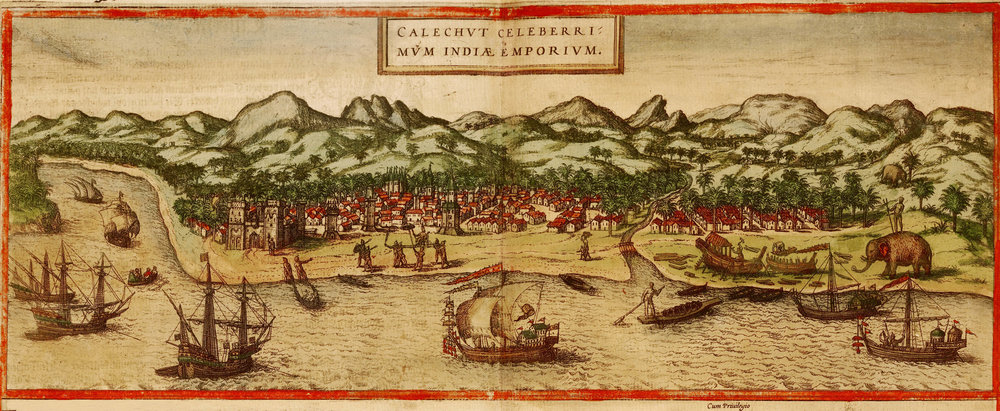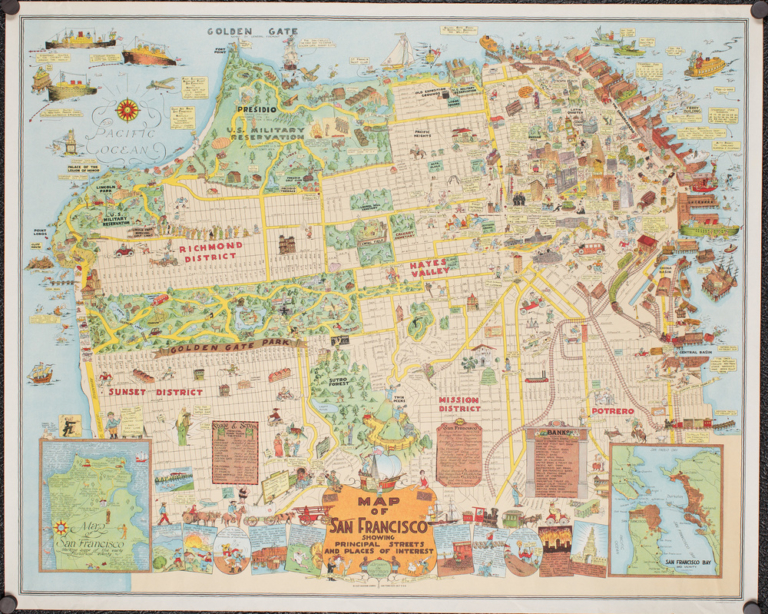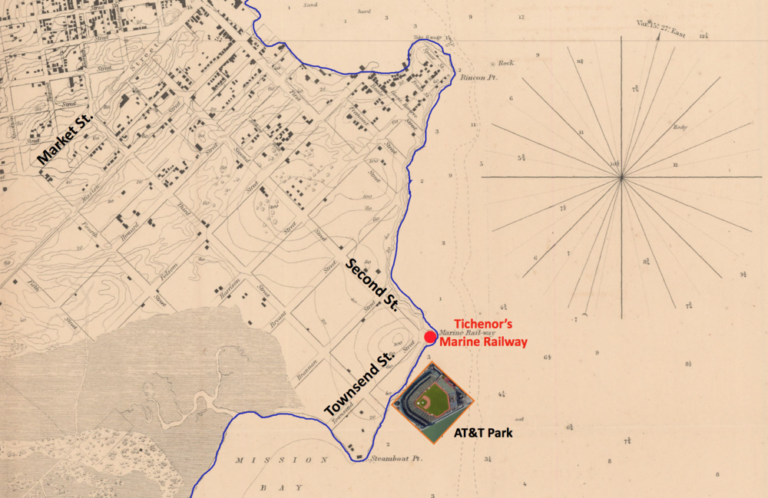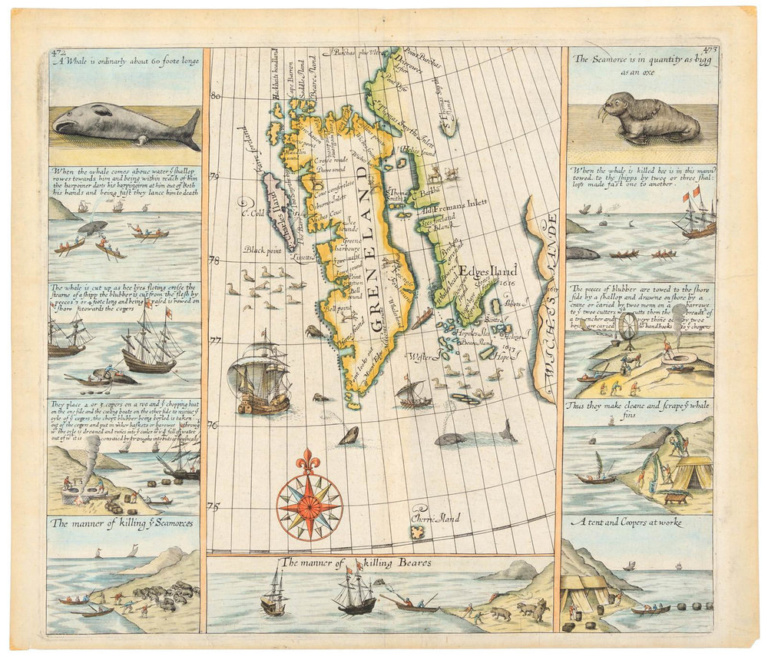In 1498, the Portuguese explorer Vasco da Gama, landed at present-day Kozhikode, India, which was then Calicut, “The City of Spices,” capital of the independent Samoothiri (Zamorin) kingdom, which was then a rising power on India’s western Malabar coast.

During the 14th century, the city grew into a center of the spice trade between Asia and the Middle East, serving as a major destination port on the sea route across the Arabian Sea from ports in northeast Africa, Egypt, and on the Arabian Peninsula. When the Portuguese fleet led by da Gama arrived at Kozhikode, there were reportedly 700 ships waiting to offload goods, and da Gama was greeted by an Arab merchant who spoke Portuguese. It also was an important producer of the cloth named for the city: calico.
The Portuguese went to great lengths to keep their geographic knowledge secret, but evidence of their explorations is soon found on maps. This map, printed from a woodblock in 1541, is an important early document of Portuguese voyages to South India:

For the Portuguese and other Europeans, da Gama’s successful journey was a rich opportunity to expand a spice trade that had always been dangerous and expensive, and had, after the fall of Constantinople in 1453, become increasingly costly and difficult, as the Ottoman empire closed off the traditional trade routes that had made Venice and other Italian maritime city-states wealthy. The rise of Portuguese power followed on the success of da Gama’s voyage, which proved the viability of maritime trade over routes around the south of Africa and across the Indian Ocean. And with the spice trade came the rise of European imperial power in Asia.

For Kozhikode, da Gama’s success was rather less pleasant. In 1500, a Portuguese fleet led by Pedro Álvares Cabral became embroiled in violence with Arab merchants, and then traveled to the nearby kingdom of Cochin, an unwilling vassal of the Zamorin, who would ally with the Portuguese. In 1502, da Gama returned with a Portuguese fleet of 15 ships, and demanded that the Zamorin (the ruler) expel all Muslim merchants, and, when this order was refused, da Gama bombarded the city, before sailing to Cochin, where the Portuguese were welcomed.
Despite the Portuguese aid to the Cochin rebellion, Kozhikode remained a powerful local state. It was not until the next century that Dutch and then British forces began to dominate the city.



